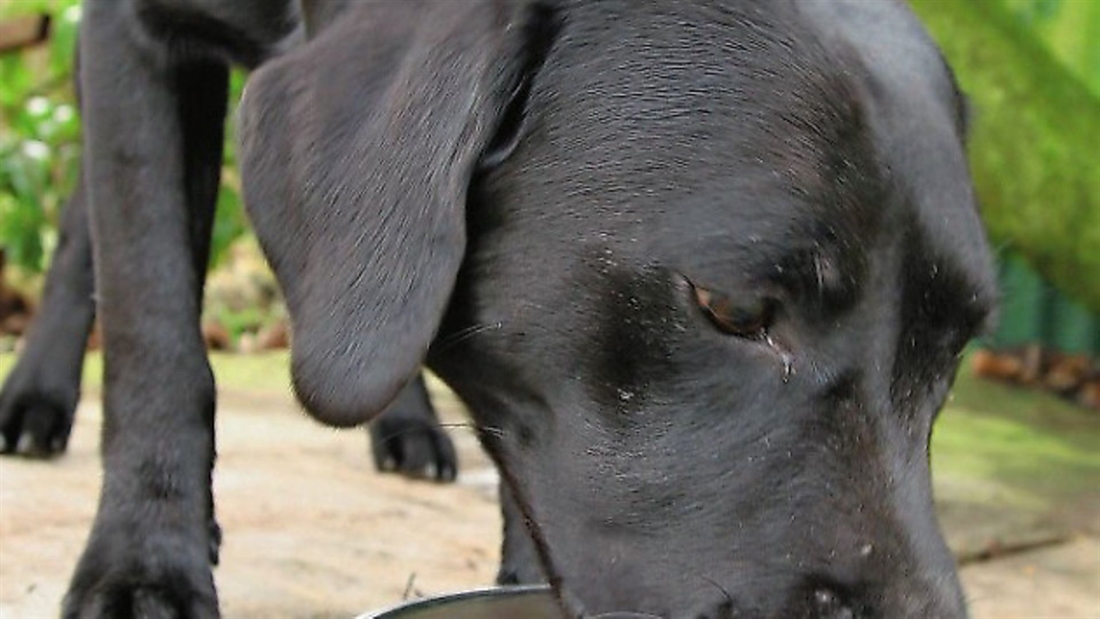Gundog health: how to maintain healthy digestion

We are what we eat, and this is also true of our dogs. This month Vicky explains how a healthy digestive system works and how to spot the early signs of disease
Our working gundogs need energy to drive their muscles and a range of vitamins, minerals, proteins, carbohydrates, and fats to keep them healthy. To get everything he needs from his diet, your dog needs a healthy digestive system. Digestion starts when your dog chews and swallows his food. Dog saliva is just there to lubricate food and contains no digestive enzymes. Food is then pushed down the oesophagus and into the stomach by muscular contractions.
Occasionally, food will get stuck in the oesophagus if a dog eats too quickly; they often panic and look like they can’t breathe, but massaging the neck and offering a bit of soggy bread usually clears the obstruction. In the stomach, acids and enzymes break down the food. Food doesn’t stay in the dog’s stomach for long, usually less than three hours. Obstructions in the stomach or further down the gut, infections, or illnesses may cause vomiting. Occasional vomiting is nothing to be concerned about, but if your dog is continually or regularly vomiting, or can’t keep water down, contact your vet. Note how long after eating your dog is sick and whether food is digested or not as this will help your vet make a diagnosis.
Next, the food enters the small intestine and is further digested by enzymes from the pancreas. Some dogs are prone to painful inflammation of the pancreas (pancreatitis) if fed fatty foods; cockers may be at higher risk than other breeds. Bile is also added to the food in the small intestine to aid fat digestion. The small intestine is also where nutrients are absorbed into the blood stream. Any indigestible matter then enters the large intestine. Water is absorbed here before the faeces are pushed out. Get to know what your dog’s droppings are usually like as changes in colour, frequency or consistency can be the first signs of disease.
The nutrients that entered the blood stream from the small intestine then pass through the liver. The liver helps to control the level of glucose in the blood by storing excess glucose as glycogen. The regulation of blood glucose requires insulin from the pancreas and dogs can lose the ability to produce insulin, leading to diabetes. Symptoms include tiredness, increased thirst and increased peeing. The liver also metabolises proteins to amino acids which are used as ‘building blocks’ to repair the body, and to produce many hormones and neurotransmitters for the body. The liver turns fat into energy sources and components for healthy cells and body processes. On top of all that, the liver stores some vitamins, helps regulate temperature and detoxifies many substances!
What you feed your gundog will impact on its health and how well it works. Dogs can make carbohydrates in their cells so don’t have to eat them, though certain fibres are useful in the diet to support healthy gut bacteria. Research suggests that dogs doing intermediate or endurance work (like gundogs) need 25-35% of their calories to come from protein and 35-65% from fat. This can be hard to compare to the figures on feed packaging, but equates to a dry food with 20-30% protein and 10-20% fat as fed. Diets for working dogs should be highly digestible (you can assess this by the size of the droppings – smaller means more digestible) so that the digestive tract is never too full during exercise. Hardworking dogs benefit from having a third of their food two to three hours before exercise and the rest one hour after exercise finishes. This reduces the risk of stomach ulceration, collapse and diarrhoea.





